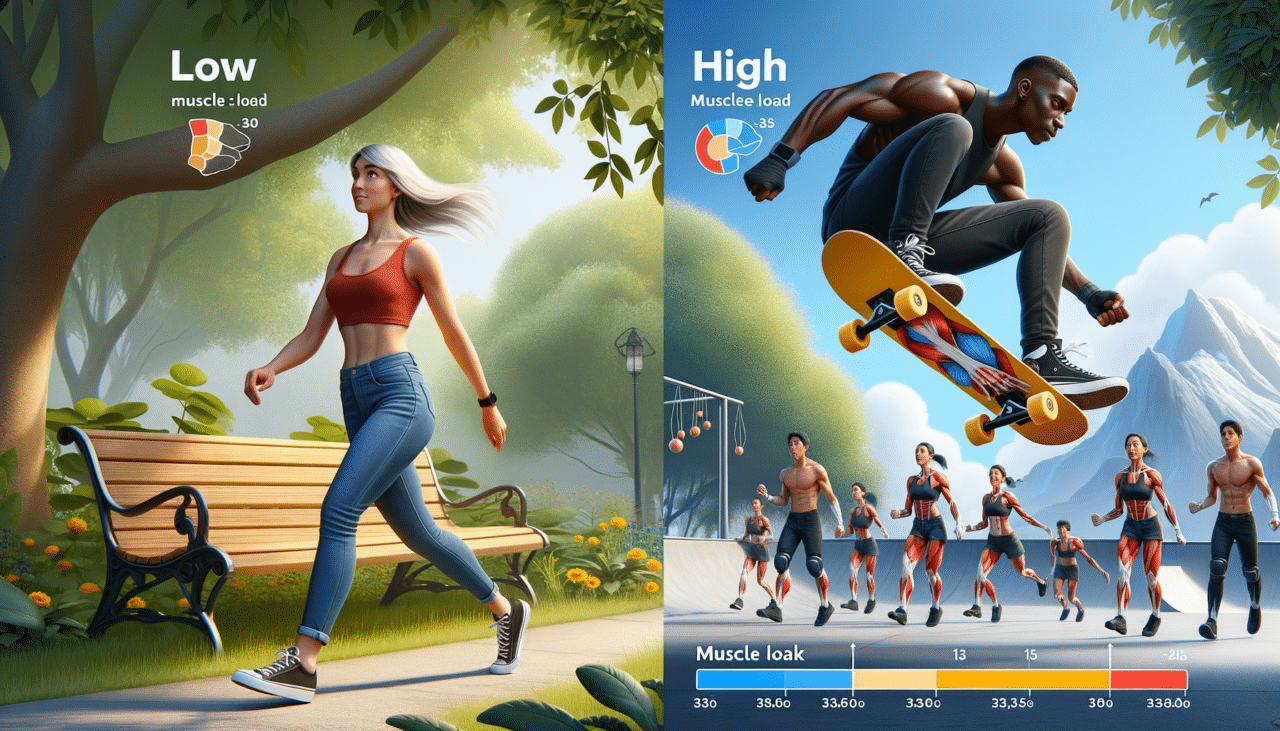Walking vs. Skateboarding: Analyzing Low vs. High Muscle Load
In the bustling orchestra of urban life, where sidewalks are runways and streets are stages, the debate between walking and skateboarding is akin to choosing between two melodies—both fulfilling, yet distinct in their rhythm and demand. This comparative exploration delves into the world of walking and skateboarding, focusing on the muscle load each activity imposes and how it shapes our everyday mobility.
Walking: The Gentle Giant of Exercise
Walking is the unsung hero of cardiovascular health, often overshadowed by its more vigorous counterparts in the fitness world. It’s the gentle giant that encourages a steady, rhythmic engagement of muscles, requiring minimal equipment or preparation.
Characteristics of Walking:
- Muscle Engagement: Primarily targets the lower body—quads, hamstrings, calves, and glutes—with a low-intensity muscle load.
- Accessibility: Requires no special equipment aside from a comfortable pair of shoes, making it universally accessible.
- Flexibility: Easily adaptable to various paces and terrains, offering a customizable workout.
- Benefits: Promotes cardiovascular health, aids in weight management, and reduces stress levels.
Skateboarding: The Dynamic Dance of Balance and Agility
Skateboarding, on the other hand, is the embodiment of urban agility—a dynamic dance that infuses balance with bursts of muscle engagement. It’s a high-octane activity that not only tests your physical limits but also your creative expression.
Characteristics of Skateboarding:
- Muscle Engagement: Engages major muscle groups including the core, legs, and even the upper body; high-intensity muscle load due to balance and trick execution.
- Skill Requirement: Demands a certain level of skill and practice to master balance and coordination.
- Equipment Dependency: Requires a skateboard and protective gear, adding an element of preparation.
- Benefits: Enhances balance, coordination, and core strength, while providing an exhilarating experience.
Comparative Table: Walking vs. Skateboarding
| Feature | Walking | Skateboarding |
|---|---|---|
| Muscle Load | Low | High |
| Primary Muscles Engaged | Quads, Hamstrings, Calves, Glutes | Core, Legs, Upper Body |
| Skill Level | Basic, minimal learning curve | Intermediate to advanced, requires practice |
| Equipment Needed | Comfortable shoes | Skateboard, helmet, pads |
| Accessibility | Universally accessible, suitable for all ages | Less accessible, requires specific skills and equipment |
| Health Benefits | Cardiovascular health, stress reduction, weight management | Balance, coordination, core strength |
| Adaptability | Highly adaptable to pace and terrain | Limited adaptability, dependent on surface and skill level |
Conclusion: Choosing Your Path
In the grand tapestry of mobility, walking and skateboarding each offer unique threads of physical engagement and personal expression. Walking, with its low muscle load, provides a serene yet effective pathway to health, accessible to all who seek its gentle embrace. Skateboarding, conversely, demands a high muscle load, rewarding its practitioners with enhanced balance and an adrenaline-fueled ride through life’s urban landscapes.
Whether you choose the steady path of walking or the dynamic journey of skateboarding, each offers its own symphony of movement, contributing to the harmonious rhythm of a healthy lifestyle. As you lace up your shoes or grip your skateboard, remember that the true essence of these activities lies not just in their physical benefits, but in the joy and freedom they bring to our daily lives.

Comments (0)
There are no comments here yet, you can be the first!